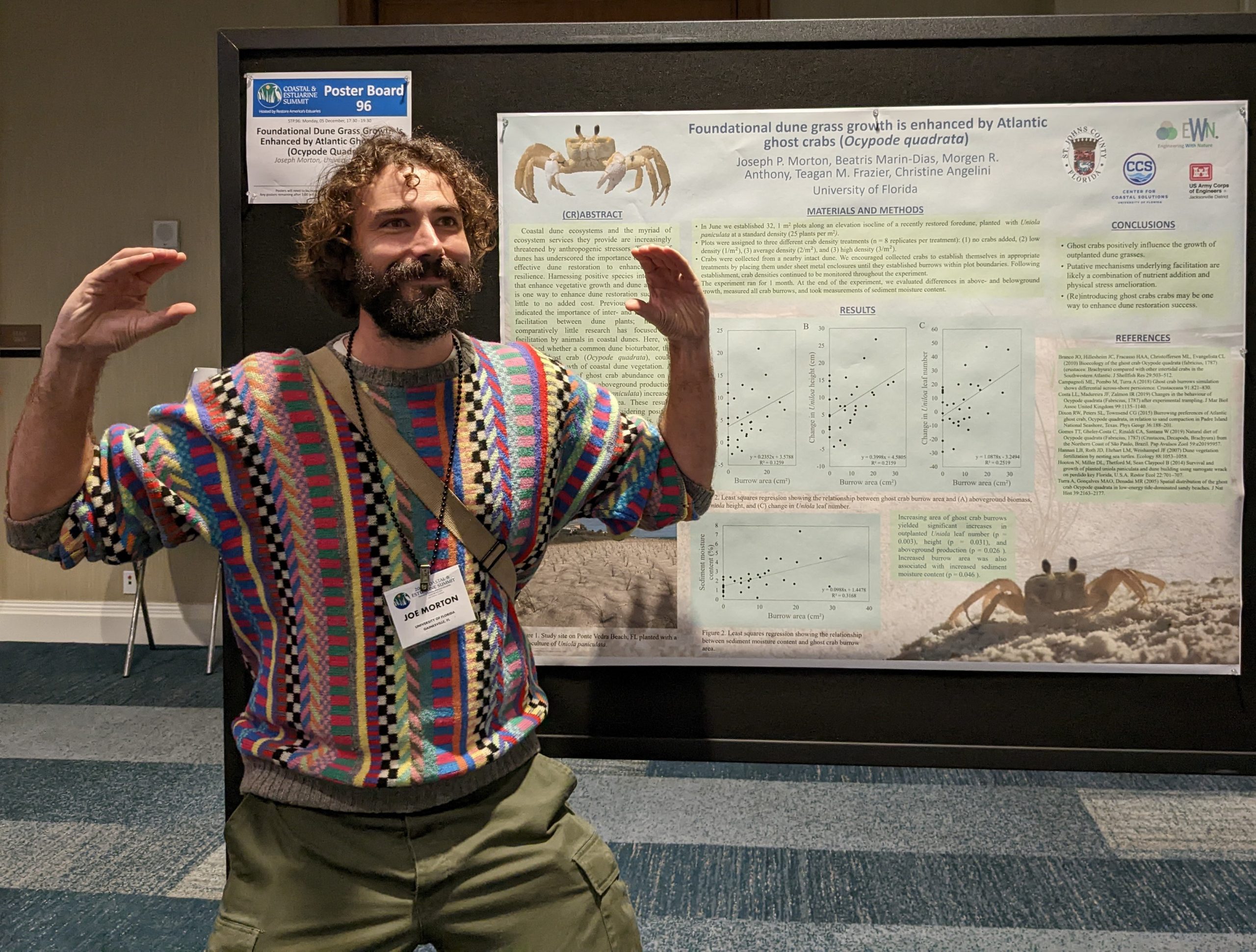Five researchers from CCS were among more than 1,000 coastal restoration professionals, policy makers, and regulators who attended the 2022 RAE Coastal & Estuarine Summit in New Orleans in December to network and share insights for navigating and pursuing new, more robust strategies to protect and restore our coastal resources.
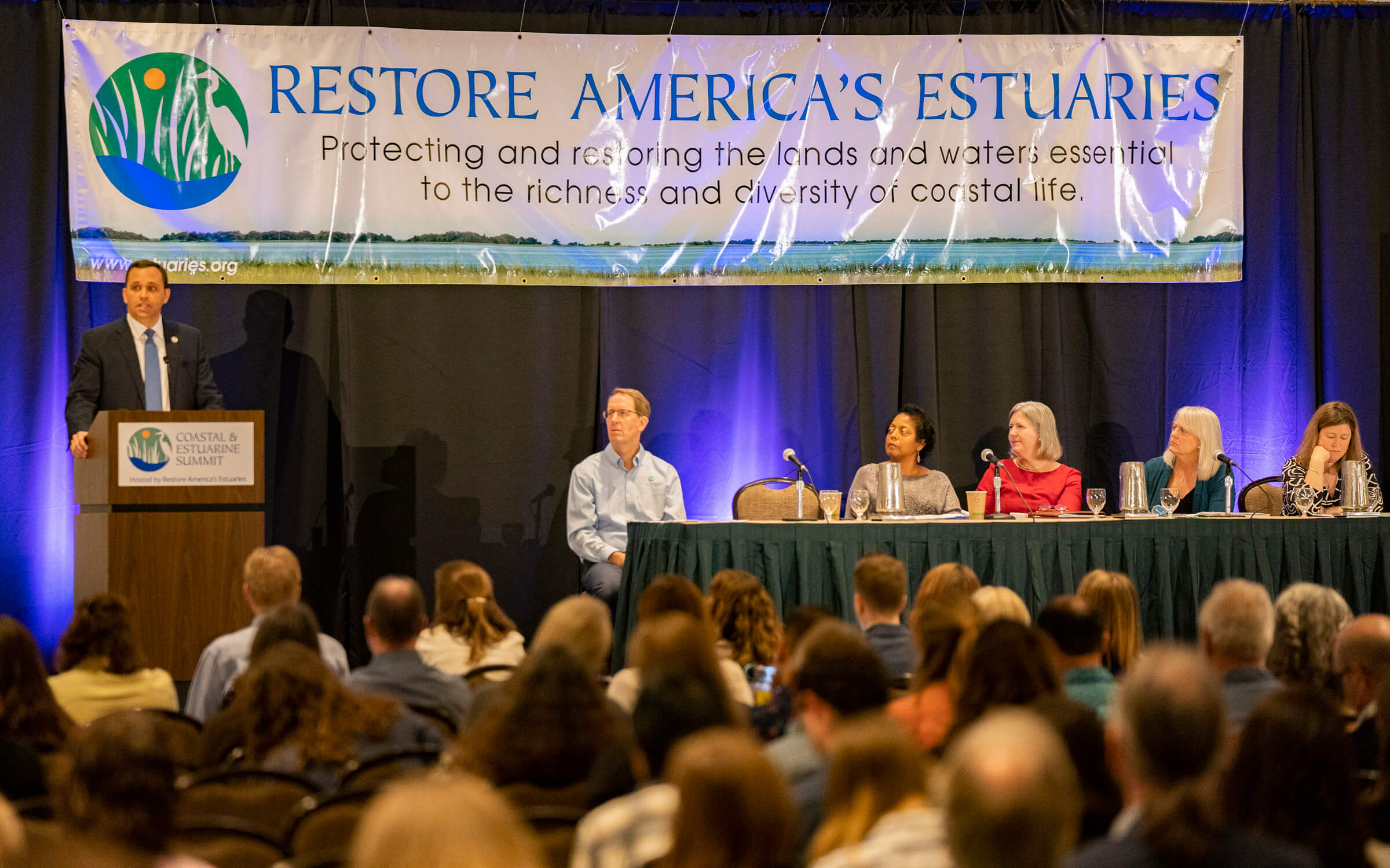
UF graduate students and postdoctoral researchers, whose studies are breaking new ground with exciting implications for the development of coastal resilience strategies, shared the results of recent studies at the summit, and met with officials and companies working in coastal restoration projects about the potential application of their findings.
Mussels Enhance Carbon and Nutrient Sequestration in Coastal Ecosystems
PhD student Sydney Williams shared her study on how ribbed mussels help move organic matter, such as nutrients, from coastal systems to neighboring salt marshes. This work highlights how suspension feeders like mussels enhance the ability of coastal vegetated ecosystems to sequester carbon and nutrients, which can improve water quality and mitigate the impacts of climate change.
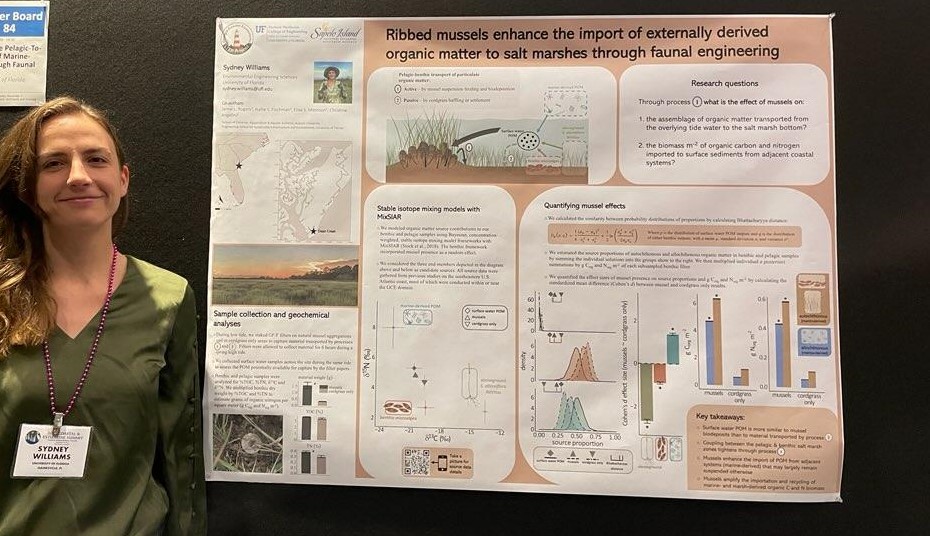
What Stingrays Could Mean for Seagrass Restoration
Postdoctoral student Beatriz Marin-Diaz presented an overview of an experiment she led to understand the effects of stingrays on seagrass restoration. Marin-Diaz found that stingrays’ disturbance of sediments may prevent seagrass colonization, highlighting that these important biological interactions need to be considered when developing restoration methods and goals. Marin-Diaz’s study is part of a seagrass restoration project to help protect national infrastructure by preventing erosion and attenuating waves. Her work is part of the Nature Conservancy‘s seagrass restoration project, led by Bay County near Tyndall Air Force and supported by the RESTORE Act program.
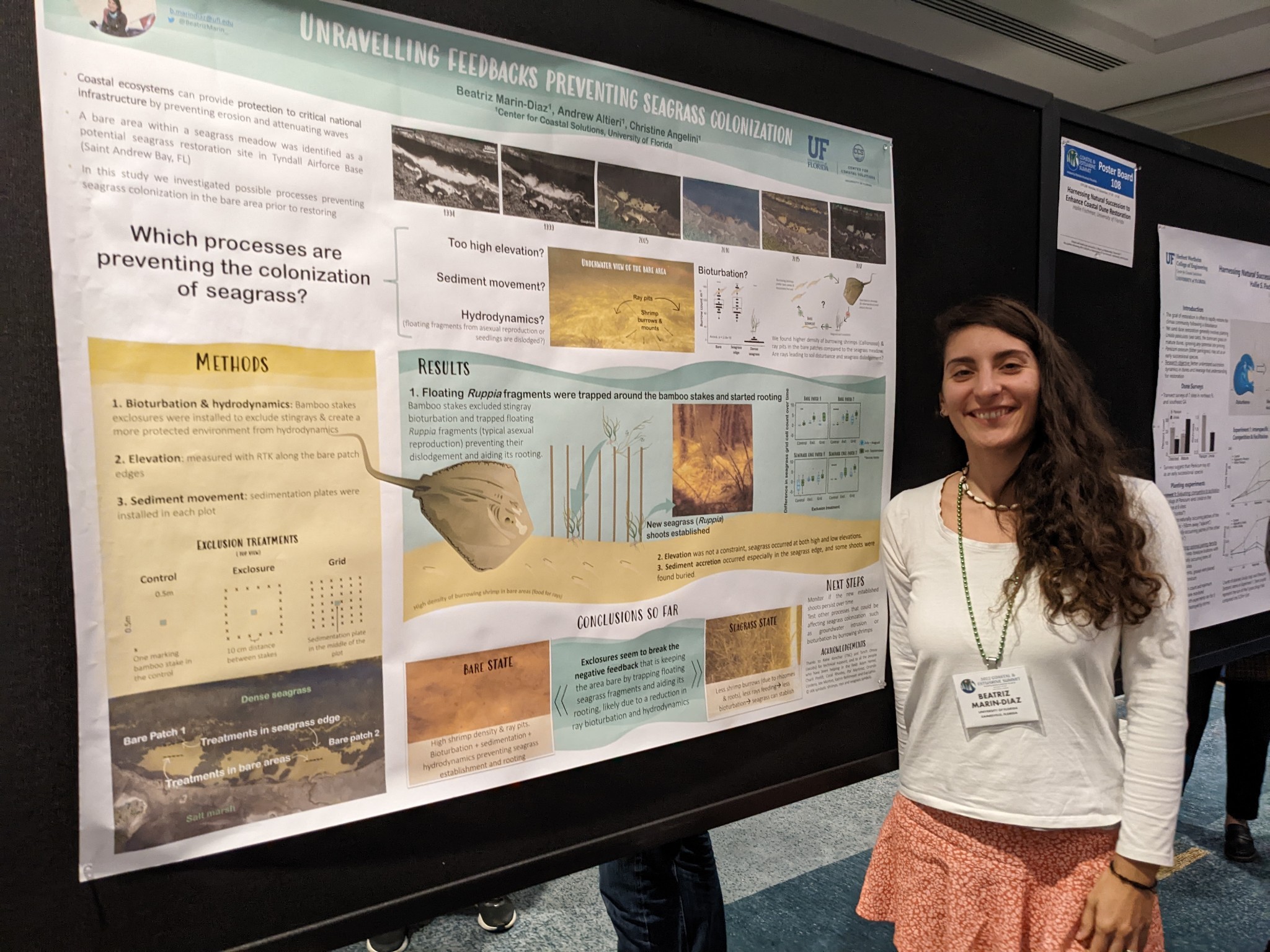
Can Positive Species Interactions Improve Restoration Outcomes?
Graduate student Hallie Fischman shared ideas for an alternative to traditional dune restoration in Florida, which often involves planting only a single species of dune grass, thus ignoring potential species interactions. Her team completed two planting experiments in Northeast Florida to evaluate if successful interactions can occur to improve dune restoration outcomes, leading to stronger more resilient coastal communities. They found the grass species bitter panicum can facilitate the establishment of sea oats, an ecologically important species.
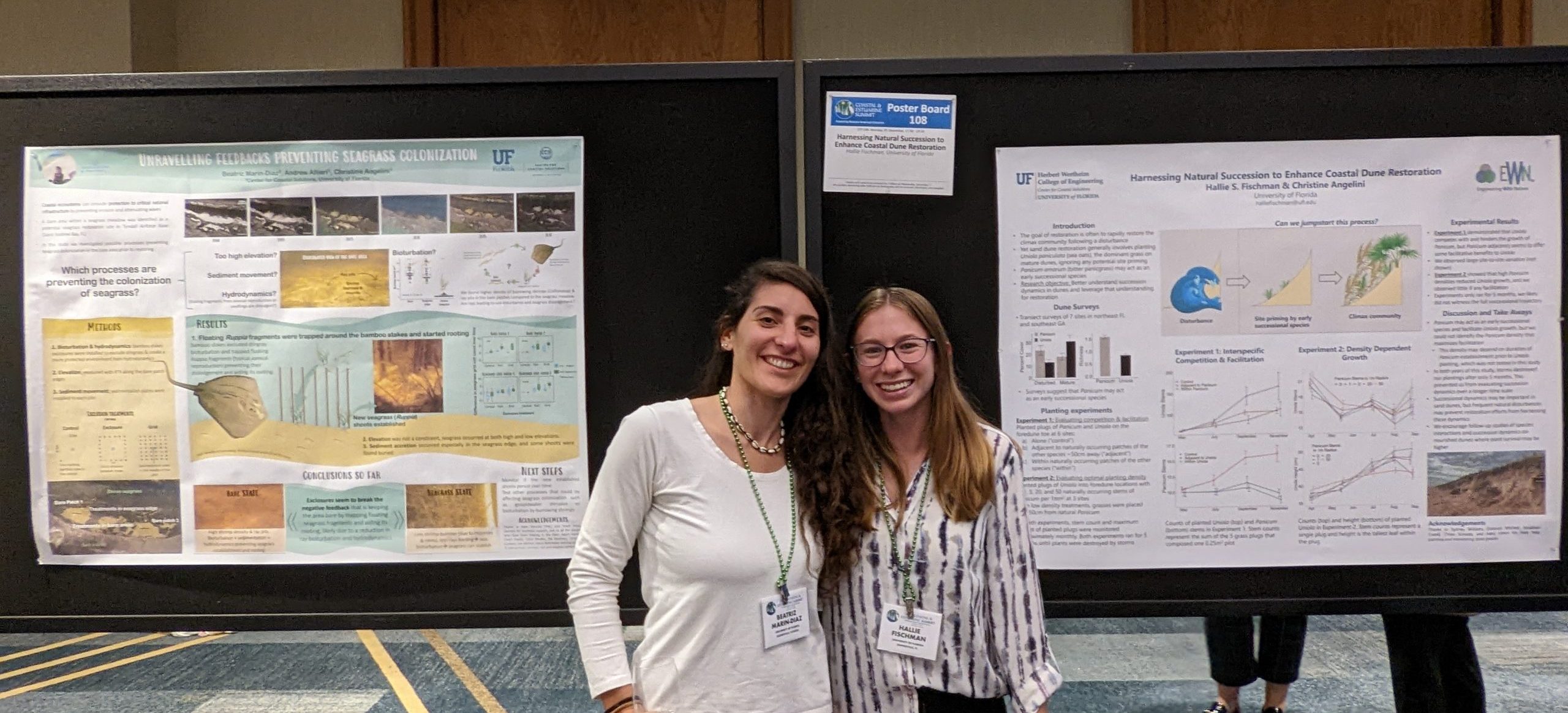
How Ghost Crabs Affect the Growth of Coastal Dune Vegetation
Joe Morton, a CCS postdoctoral associate, presented his research on how the Atlantic ghost crab can facilitate the growth of coastal dune vegetation. His team found that growth of planted sea oats was higher in places with more ghost crabs. This finding underscores the importance of considering positive species interactions in dune restoration practices and helps fill a gap in our understanding of the inter- and intraspecific interactions among plants and animals in coastal dunes.
